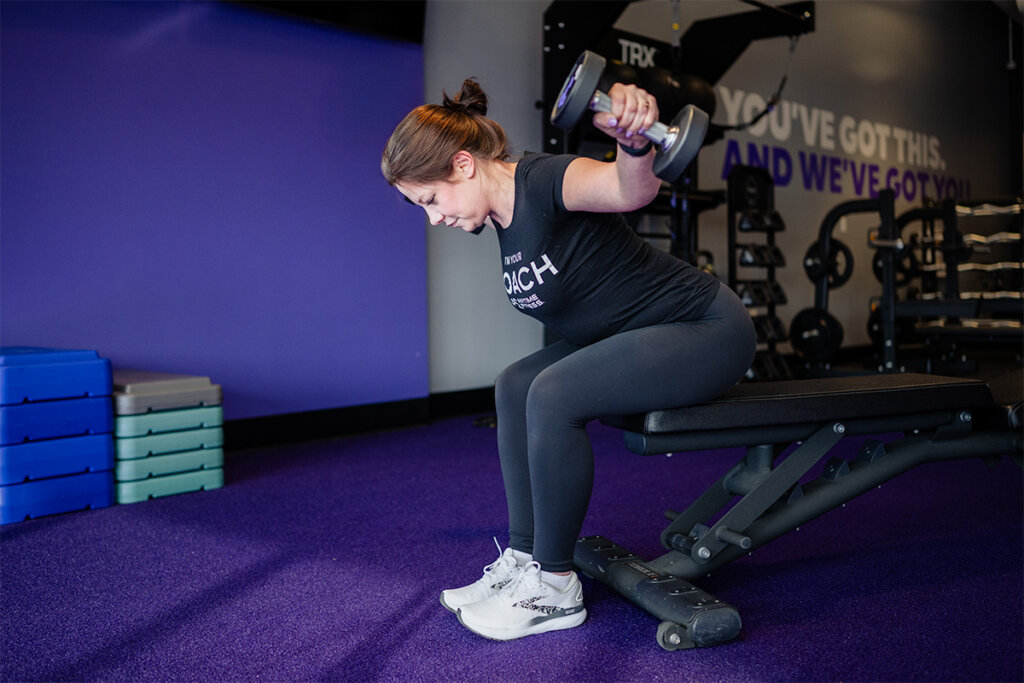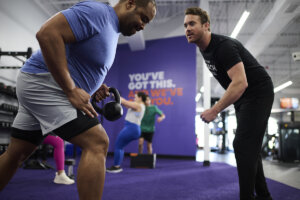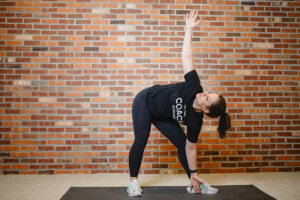The rear deltoids: you may not know where they are or what they do — or you may know and neglect to target them during your workouts. No matter which category you fall in, you can benefit from adding rear delt exercises to your back and shoulder routine.
Let’s talk about the why and how of strengthening your rear delts. In this blog, we’ll cover:
- What are the rear delts?
- Why are the rear delts important?
- How to isolate your rear delt muscles
- Eight rear delt exercises to build strength and stability
What are rear delts?
Before we explain what the rear delts do, you may be wondering: “where are your rear delts?” As the name implies, the posterior deltoids, or “rear delts,” are the rear of the shoulder. They are part of a muscle group in the shoulders made up of three heads:
- Anterior (front shoulder)
- Medial (side of the shoulder)
- Posterior (back of the shoulder)
The anterior deltoid is worked more than many of the other muscles in the shoulders. This is because a lot of the work we do is forward-facing (think: driving, typing, lifting and carrying children). Meanwhile, the rear delts tend to be neglected — but they’re just as important for promoting strength and stability, as well as preventing muscle imbalance in the shoulders.
The benefits of strong rear delts
- Better functional movement. Strengthening one muscle in the shoulders makes the entire group stronger. The rear deltoids work together with nearby muscles like the biceps and lats to help you perform everyday actions (for example: lifting a suitcase into an overhead bin or pulling a door open).
- Improved posture. The rear delts are retractor muscles, meaning they pull your shoulders down and back. Strong back and shoulder muscles provide a counterbalance to the chest muscles to keep your posture upright.
- Decreased risk of injury. The rear delts also work alongside the rotator cuff, a set of four stabilizer muscles, to maintain range of motion. If the rear delt is weak, the body may rely more on other muscles to compensate, leading to muscle imbalance, improper joint motion, and potential injury.
Push vs. pull workouts
Because the rear delts primarily work in a pulling movement to rotate the arm around the shoulder joint, they are considered “pull” exercises. During pull workouts, you move the weights closer to your body when your muscles contract (think: bicep curls, pull-ups, bent-over rows). On the other hand, push workouts involve moving weights away from your body (think: push-ups, lateral raises, bench press).
For a well-rounded upper-body strength training routine, we recommend a mix of push and pull exercises to promote balance and stability. Try these workouts as part of your weekly split:
How do you isolate the rear delts to build strength?
While you can never truly isolate your rear delts, there are exercises that effectively target and strengthen the muscles. In order to get the most benefit from rear delt exercises, take time to warm up with activation drills before your sets. Brace your core to avoid swinging and swaying, which can waste energy during movements.
If your goal is to increase muscle size, follow the basic training principles for hypertrophy (aka muscular development). Focus first on using lighter weights with proper form to promote mind-muscle connection, then move onto higher weights with lower reps.
Rear delt workout: The 8 best rear delt exercises
This rear delt workout features eight exercises to challenge and strengthen your upper-back muscles for increased stability, better posture, and improved mobility.
Activation exercise: T-raise
Equipment: Bodyweight | Muscles worked: Deltoids, traps, rhomboids
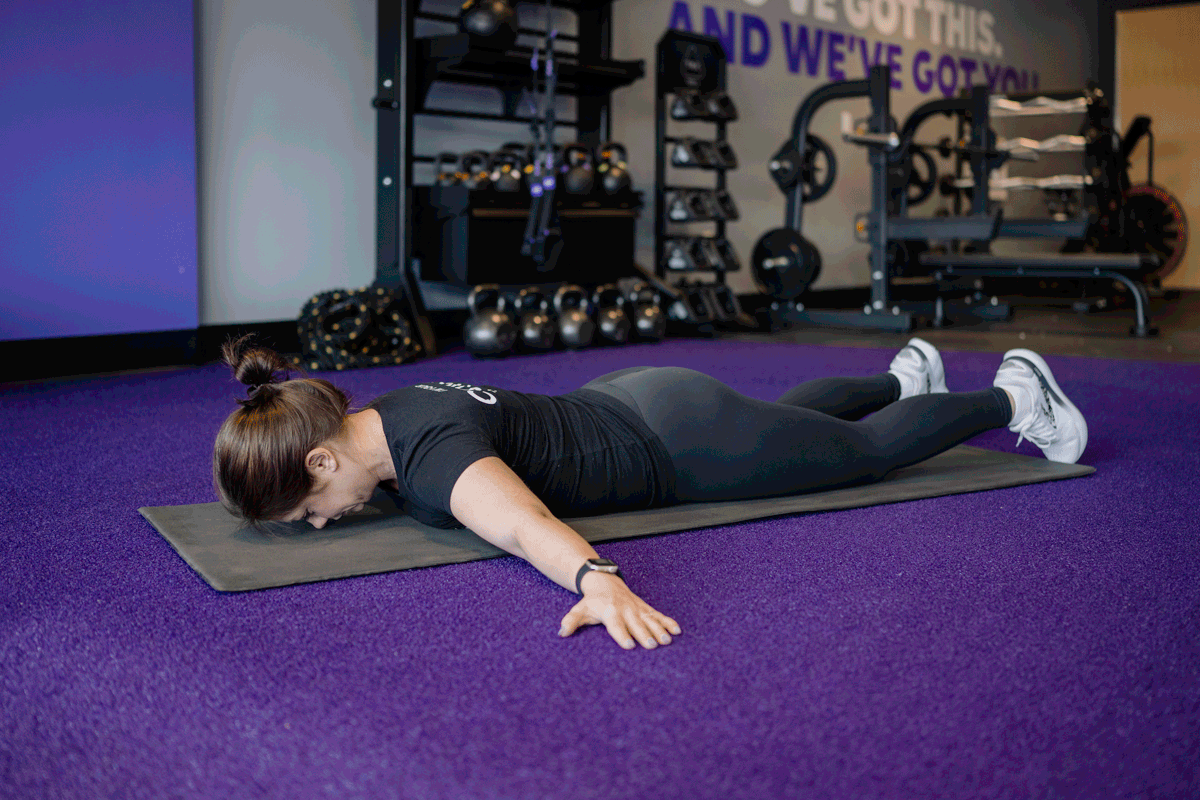
How to:
- Lie face down on the floor or a mat. Keep your elbows straight with your arms out from your sides.
- Raise your arms off the ground to shoulder height to make a “T,” tucking your shoulder blades down and back.
- Slowly lower your arms back to the ground and repeat.
Complete 2-3 sets of 10-15 reps.
Chest-supported incline row
Equipment: Bench, dumbbells | Muscles worked: Lats, rhomboids, traps, rear deltoids
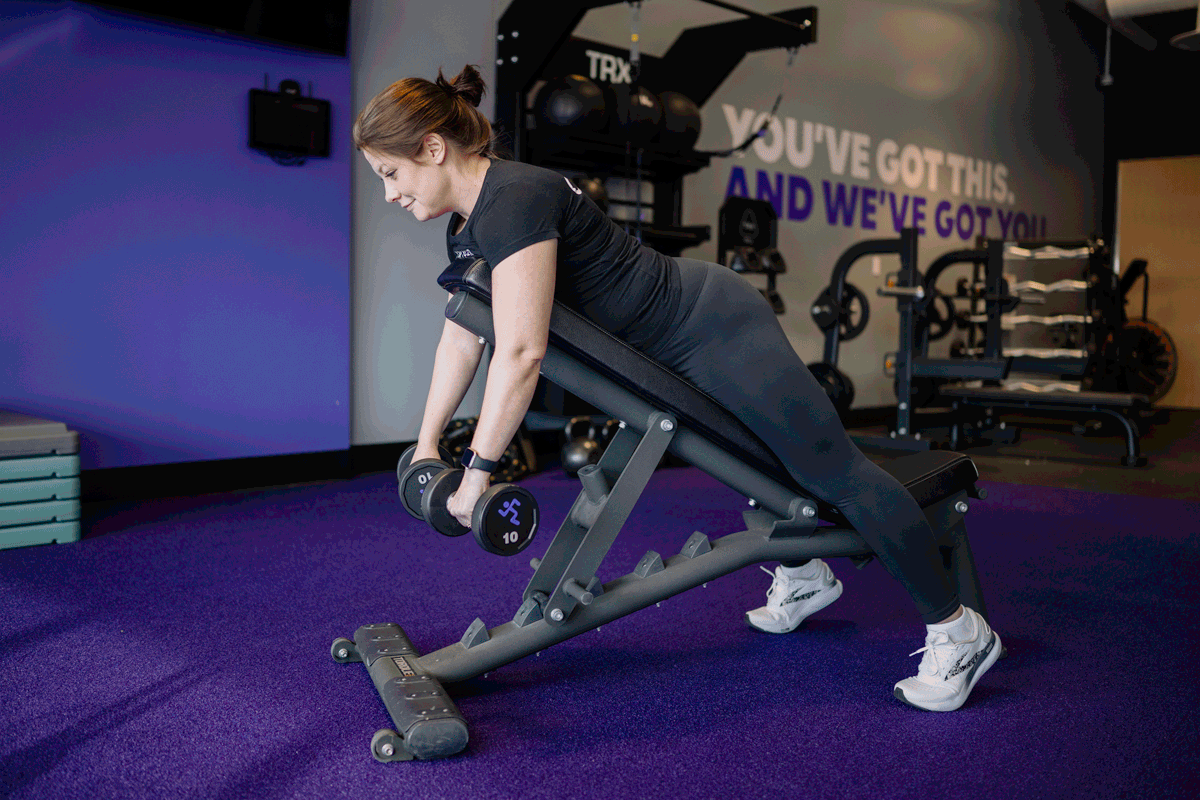
How to:
- Position the bench at a 45-degree angle.
- Lie on the bench face down with your feet on the ground and weights in your hands.
- Squeeze your shoulder blades together to row your arms up and back, keeping your elbows bent at 90 degrees.
- Lower the weights to the starting position with control. Repeat.
Complete 2-3 sets of 8-12 reps.
Cable face pull
Equipment: Rope cable attachment | Muscles worked: Rhomboids, traps, rear deltoids
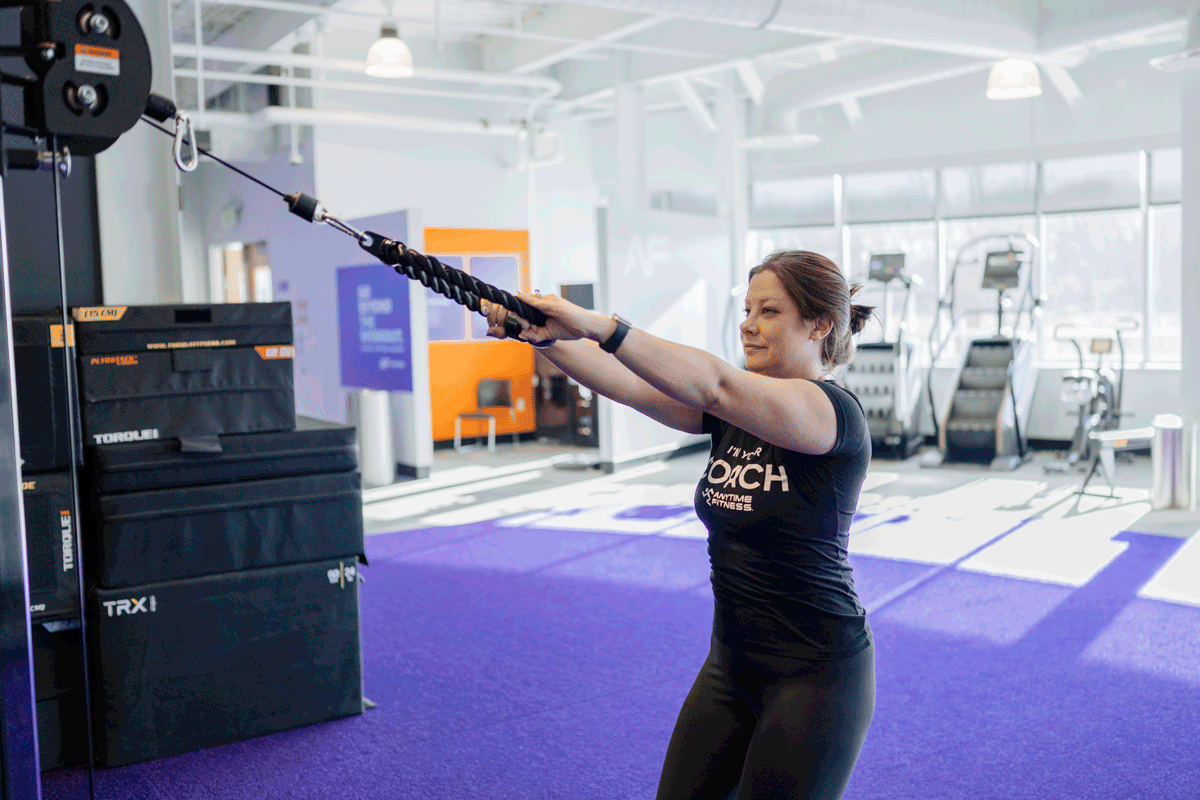
How to:
- Stand upright, holding a cable with your arms straight out at shoulder height and your back flat.
- Pull the cable straight back toward your face, bending at the elbows as you bring your hands to your ears. Avoid swaying back and forth.
- Slowly return the cable back to the starting position and repeat.
Complete 3-4 sets of 12-15 reps.
Seated reverse lateral raise
Equipment: Bench, dumbbells | Muscles worked: Rhomboids, traps, rear deltoids
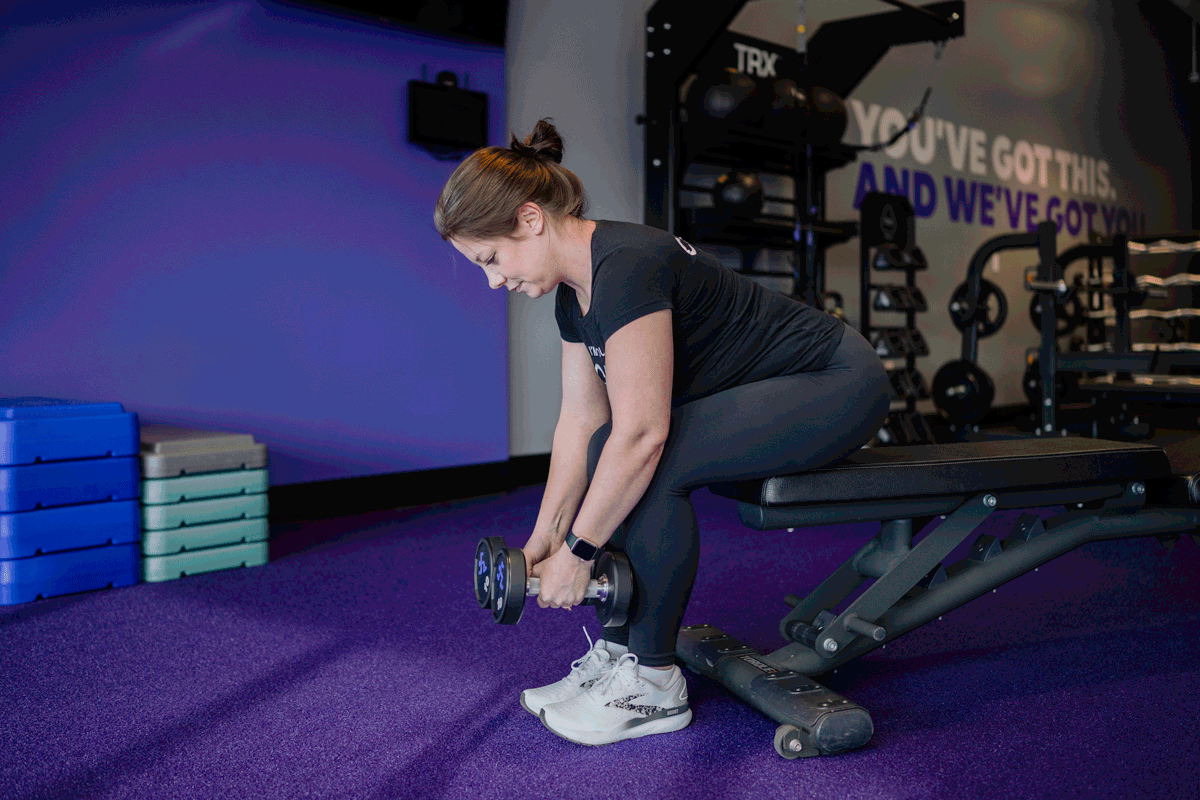
How to:
- Sit on a bench and bend forward at your waist, holding the dumbbells in front of your calves with your arms straight. Keep your back flat.
- Raise the dumbbells up and out to shoulder height, keeping your arms straight or slightly bent at the elbows.
- Slowly lower the dumbbells back to the starting position. Repeat, keeping your upper body stable throughout the movement.
Complete 2-3 sets of 8-12 reps.
TRX reverse fly
Equipment: TRX straps | Muscles worked: Rhomboids, rear deltoids, core
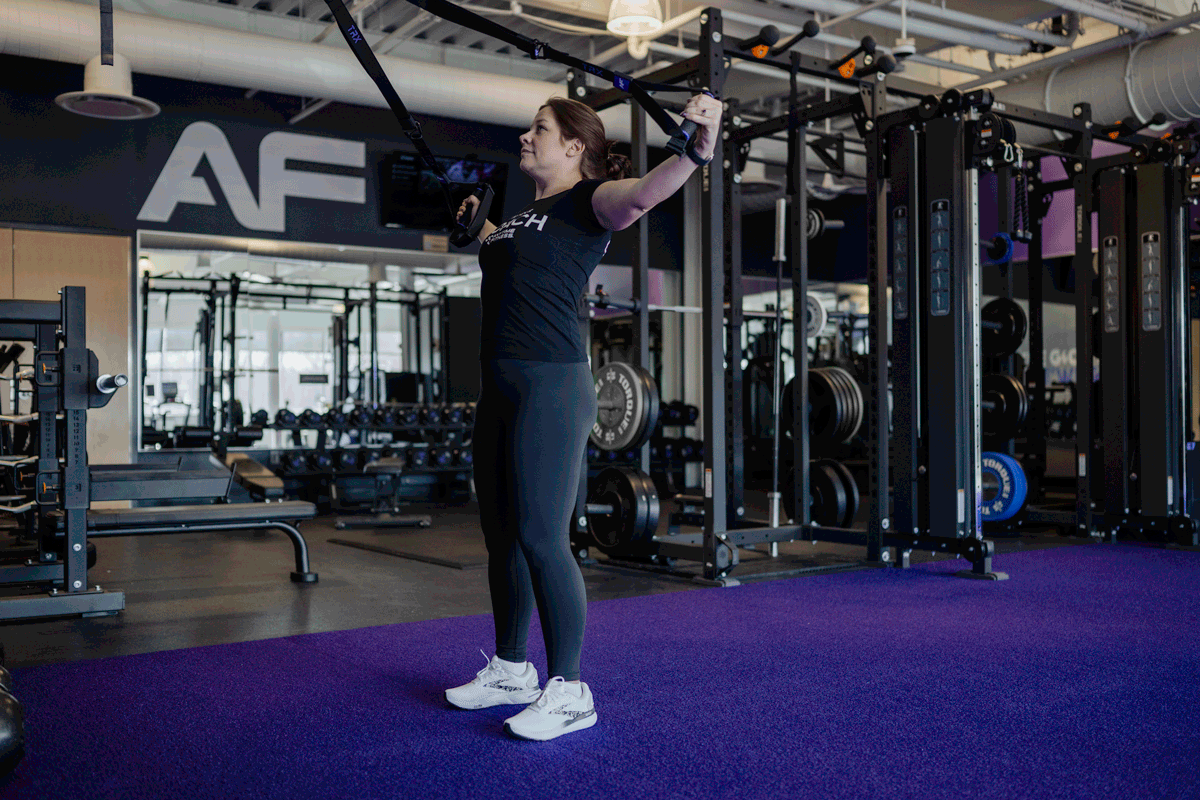
How to:
- Shorten the TRX handles and hold the grips at chin height.
- Lean back while keeping your body in a straight line.
- Pull your body upward, forming a “T” with your arms out to the side as you lift up.
- Slowly return to the starting position. Repeat, keeping your body straight throughout the movement.
Complete 2-3 sets of 8-12 reps.
Resistance band reverse fly
Equipment: Resistance band | Muscles worked: Rhomboids, traps, rear deltoids
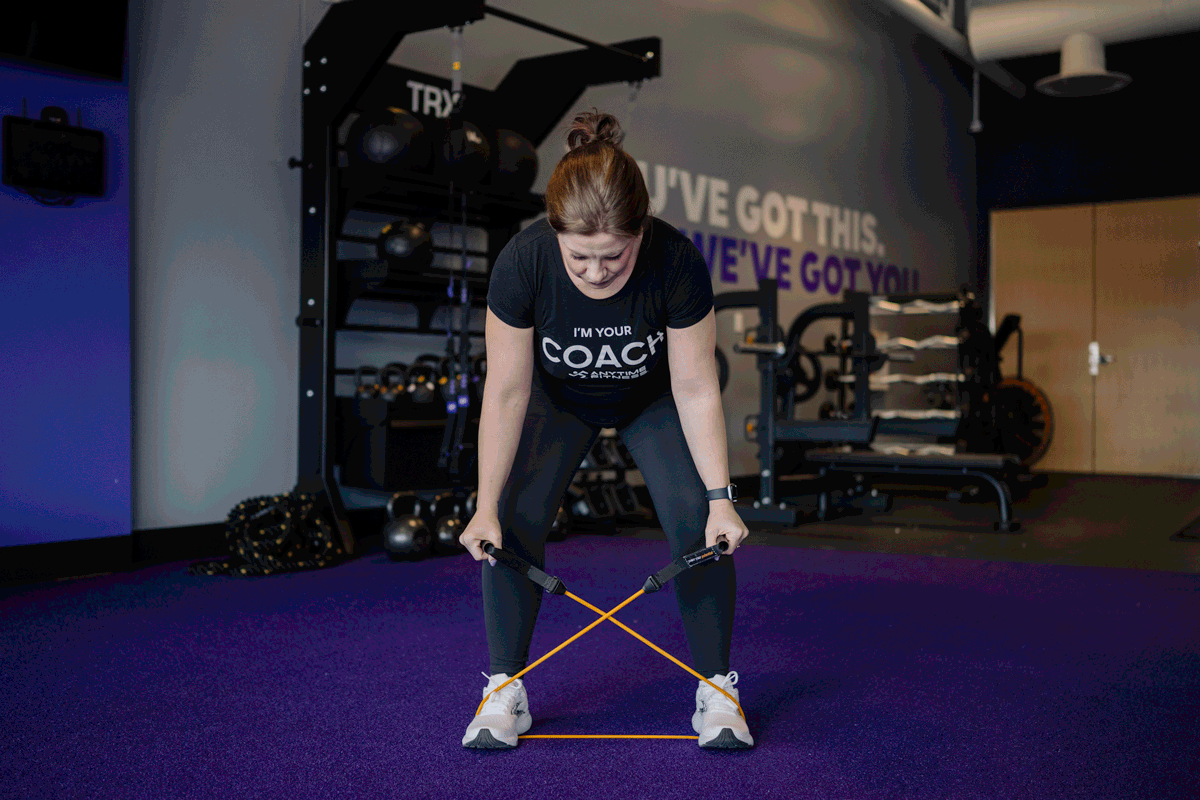
How to:
- Place the middle of the resistance band under your feet and bend over at the waist. Grip the handles with your hands crossed, arms straight, and feet hip-width apart.
- Raise the handles up and outward in an “X” shape to shoulder height. Keep your back flat throughout the movement.
- Slowly lower the handles back to the starting position.
Complete 3-4 sets of 10-15 reps.
Speed wave
Equipment: Battle ropes | Muscles worked: Biceps, triceps, lats, rear deltoids, core, quads, glutes
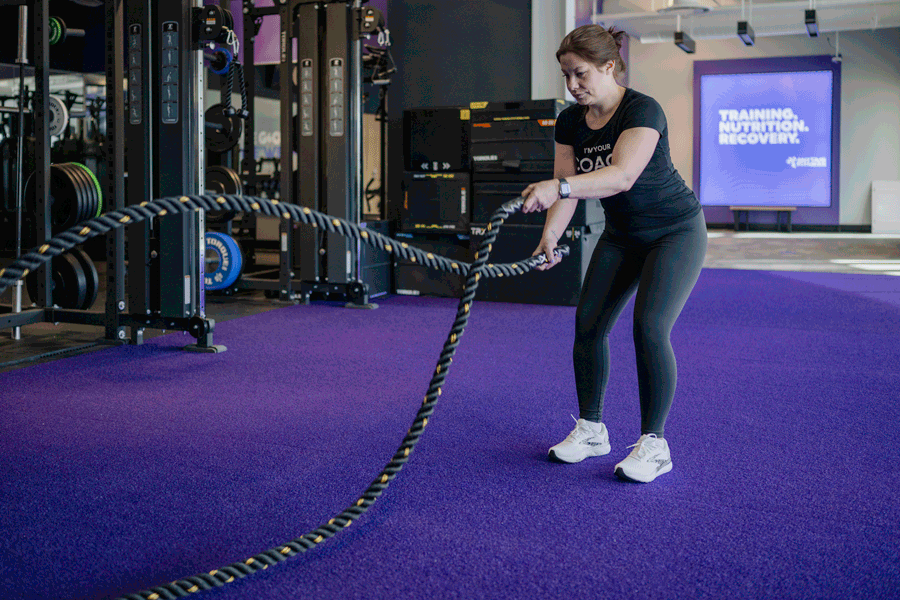
How to:
- Grip one end of the rope in each hand in a semi-squat position, keeping your back flat.
- Rapidly raise one arm up to chest height and lower the opposite arm to your knee, flipping each end of the rope out in front of you.
- Rapidly lower and raise your arms in an alternating pattern, continuing to flip each side of the rope.
Perform this movement for 30 seconds followed by 15 seconds rest, for 3-4 rounds.
High row
Equipment: Resistance bands | Muscles worked: Lats, rhomboids, traps, rear deltoids

How to:
- Attach the band overhead to pull it at around 45 degrees, gripping with both hands.
- Pull both hands to the top of your chest and squeeze your shoulder blades toward your spine.
- Slowly lower the handles back to the starting position. Repeat.
Complete 2-3 sets of 8-12 reps. Finish all reps on one side before moving to the other.
A final note on rear delt exercises
Whether your goal is to build strength and stability or to bulk up and sculpt your back and shoulders, rear delt exercises are a vital part of an upper-body strength training routine. Add these eight moves to your next upper-body workout to improve posture and athletic performance, prevent injury, and make everyday activities easier.
Try these chest, back, and shoulder workouts
Want more workouts like this one? Team up with an Anytime Fitness Coach to get training, nutrition, and recovery plans tailored to your needs and fitness goals.
